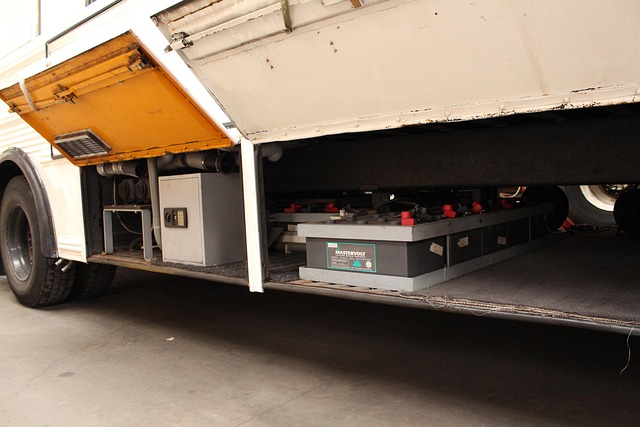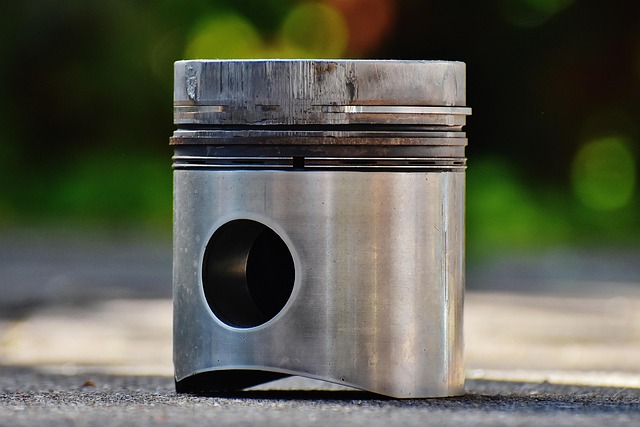Looking to register your car in California? This comprehensive guide breaks down the process step-by-step, ensuring a smooth experience. From understanding essential requirements like vehicle identification number (VIN) accuracy to choosing approved registration methods, you’ll learn everything needed to complete the form successfully. Gather necessary documents, verify your VIN with trusted tools, and navigate the process effortlessly.
- Understand California Car Registration Requirements
- Gather Necessary Documents for Car Registration
- Verify Vehicle Identification Number (VIN) Accuracy
- Choose an Approved Registration Location or Method
- Complete and Submit the California Car Registration Form
Understand California Car Registration Requirements

Before registering your car in California, it’s crucial to understand the state’s specific requirements. One key aspect is ensuring your vehicle has a valid Vehicle Identification Number (VIN) verifier. This unique 17-character code is essential for identifying your car and proving its authenticity. In California, a mobile VIN verifier can be invaluable during the registration process, as it allows you to verify the VIN at your convenience, whether at home or on the go.
Additionally, your vehicle must meet environmental standards and safety regulations. You’ll need current insurance documents and proof of ownership, along with a completed Application for Title and Registration form. A mobile VIN inspection can help streamline these steps by providing immediate verification of your car’s history and ensuring all necessary documents are in order, making the registration process faster and easier.
Gather Necessary Documents for Car Registration

Before registering your car in California, you’ll need to gather several important documents. The first step is to obtain a Vehicle Identification Number (VIN) verification. This can be done through a mobile VIN inspection or by using a VIN verifier, ensuring that the vehicle’s history and specifications are accurate. It’s crucial to have proof of ownership, which could be a title or a bill of sale. Additionally, you’ll require valid identification documents for yourself, typically a driver’s license or state ID card.
For non-owner registrants, such as those purchasing a used car, further documentation may be needed. This includes the previous owner’s registration and proof of insurance. It’s also essential to have any relevant repair or service records handy, especially if the vehicle is out-of-state or has undergone significant modifications. These documents will streamline the registration process and ensure a smoother experience at the California Department of Motor Vehicles (DMV).
Verify Vehicle Identification Number (VIN) Accuracy

Before proceeding with the registration process, it’s crucial to ensure your Vehicle Identification Number (VIN) is accurate and legitimate. This step is essential as a faulty VIN can lead to significant delays or even rejection of your registration application. Use a reliable vin verifier to cross-check the information against official databases. Many mobile vin inspection apps are available that allow you to verify the VIN swiftly and conveniently from the comfort of your home or while you’re at a California DMV office.
Accurate VIN data is critical as it links your vehicle to its history, including previous owners, maintenance records, and any reported accidents. By ensuring the VIN’s validity early in the registration process, you’ll save time and avoid potential issues that may arise from incorrect information.
Choose an Approved Registration Location or Method

When registering your car in California, one of the crucial steps is to choose an approved registration location or method. The state offers various options, including traditional DMV locations and alternative methods like mobile vin verification services. If you opt for a mobile vin verifier, you can take advantage of convenient at-home or on-the-go inspections, where a specialist uses advanced technology to validate your vehicle’s VIN (Vehicle Identification Number).
This process ensures accuracy and speed, especially when dealing with unique or classic cars. With the help of a mobile vin inspection service, you can bypass long DMV lines and navigate the registration process smoothly. Always ensure that the chosen method or location is recognized by the California Department of Motor Vehicles (DMV) to avoid any complications later.
Complete and Submit the California Car Registration Form

To register your car in California, the first step is to complete and submit the California Car Registration Form. This form requires accurate information about your vehicle, including its make, model, year, and unique Vehicle Identification Number (VIN). The VIN is a critical piece of data that serves as a fingerprint for your car, making it essential for identifying and tracking vehicles.
For added convenience and accuracy, consider utilizing a mobile VIN verification service. This allows you to easily validate the VIN details of your vehicle remotely, ensuring there are no discrepancies before submitting your registration. A reliable mobile vin verifier can streamline the process by providing instant, official readings from various databases, making it a practical option for completing your California car registration paperwork efficiently.
Registering a car in California is a straightforward process that requires understanding specific requirements, gathering essential documents, and ensuring vehicle information accuracy. By verifying your Vehicle Identification Number (VIN) using reliable tools like a VIN verifier, you can streamline the registration at an approved location or through online methods. Remember to complete all forms accurately and submit them promptly for a smooth car registration experience in the Golden State.
